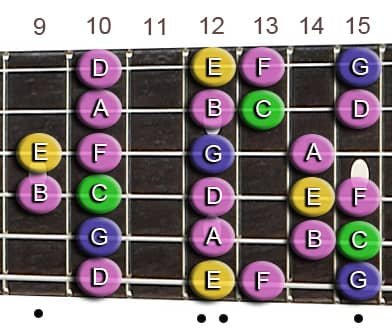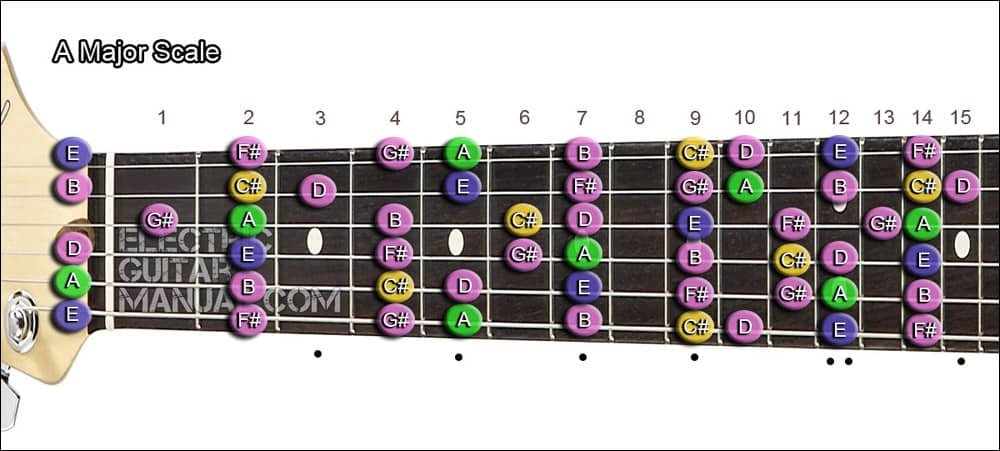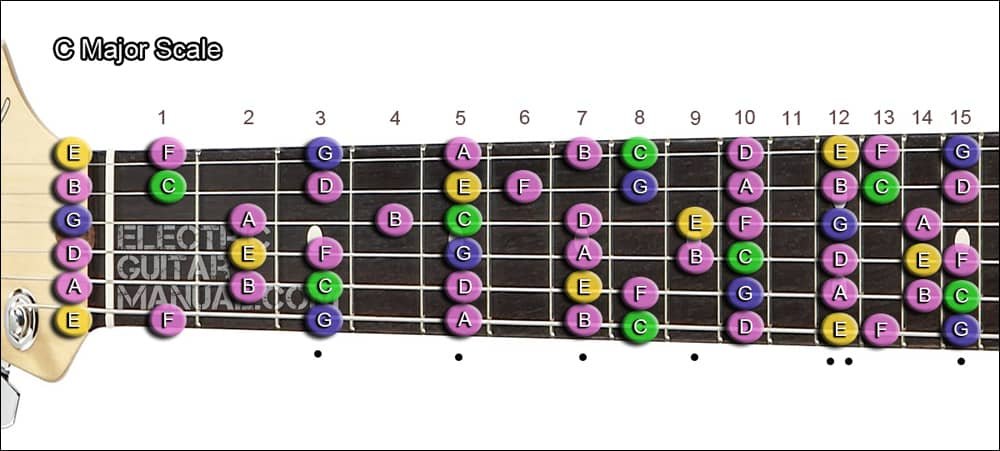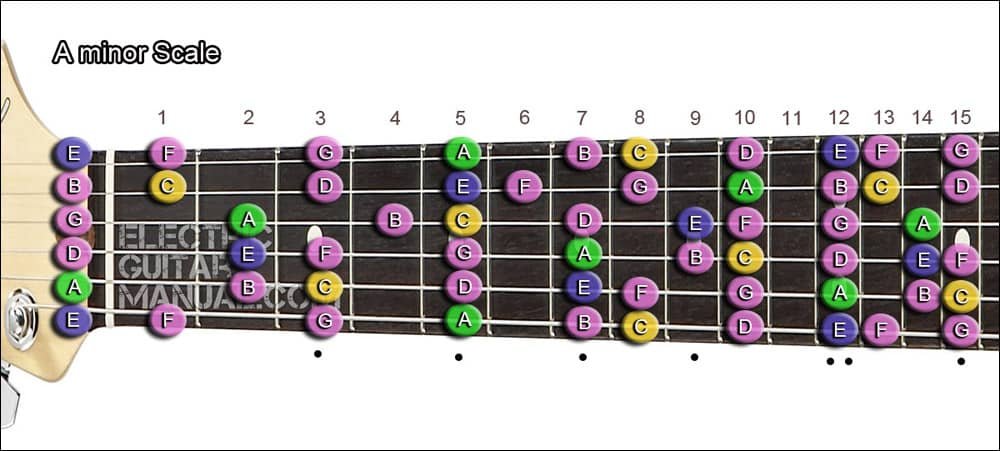
One of the headaches for guitarists is finding an effective way to learn different guitar scales, without having to memorize scale by scale, and in different keys.
So in this article I will guide you so that you can learn guitar scales more easily, although will and effort are always required to progress.
To begin with, it is best not to get overwhelmed by what we don’t know, and focus on what we want to know. No one learned the major scale arrangement in a day.
The best method to learn a guitar scale and its structure would be to divide the scale into parts. This way we can learn piece by piece its arrangement in the fingerboard. Then we put all the parts together, to have knowledge of their structure throughout the fretboard.
How to Learn Guitar Scales: Major Scale
In the image below on the left, we see the simplest figure and base of a major scale. If we play this figure at the 5th fret we will be playing in the key of C Major.
If we do it at the 7th fret, we would be playing in the key of D major, and if we play this structure at the 4th fret we will be playing in the key of B Major.
As we know, the notes of the fingerboard from the 12th fret are repeated again, as if we were starting again from the nut. So we can use this same structure, usually in two different areas of the fingerboard.
For example, if we play this figure in the key of A, or between the 2nd and 5th fret, we can also use it between the 14th and 17th fret, with a difference of one octave. In this way we will have two areas in the fingerboard in which we can move, with two different sounds when we move from one figure to the other.
Basic Graphs of the Major Scale Without a Defined Key

To begin with, it is a very simple structure to remember, although it is too brief to develop a complete melody. So once this structure is memorized we can add more notes.
For example, we can add the corresponding notes for the three thickest strings as it appears in the image above to the right, and thus we will dominate that entire area of the fingerboard. Well, with this we would have enough notes to build a great guitar solo. Especially if we take into account what was mentioned above about being able to repeat the same figure with a separation of twelve frets.
For example, David Gilmour in the guitar solo of the song “On the Turning Away” by Pink Floyd, uses this resource continuously, executing phrases with a separation of 12 frets to create a conversation between two supposedly differentiated characters.
I will not recommend a specific way to type the notes, because everyone has their preferences. You can finger as you see fit or even use the glissando resource, dragging your finger from one note to another to promote better hand posture.
In the image below on the left, we see how the sequence of the notes of the major scale would continue towards the bridge. If it’s too much to learn at once, we can first study the sequence of the first three strings. Furthermore, these notes are usually used more in solos, and then we can learn the notes of the remaining strings.
Other Major Scale Graphs

In the image above to the right we see the continuation of the previous sequence in the direction of the bridge. We will start with the thick strings exactly the same as the previous figure, but we will take a more advanced path. This last method is widely used.
Well, basically that’s all, because if we put the three parts or figures together, we will cover practically the entire fretboard (image below), taking into account that the notes are repeated from the 12th fret, as I have already mentioned before.
All Charts Together
Below we have a full Major scale (in A Major). Within the scale we can find all the provisions above.
We can say that these are the keys that we must play to interpret a song in the key of A Major.
How to Learn Guitar Scales: minor Scale
The best thing about learning the structure of the major scale is that the minor scale also has that same structure, but in a different key, compared to another major scale. To know which minor scale shares the same notes as a major scale, we simply have to look at the sixth note of a major scale.
If we take the C major scale as an example, that minor scale that shares the same notes as the C major scale would be A Minor. The notes and structure would be the same, but the way of approaching both scales would be different.

This time we will use the note A as the tonic, and it will be considered as a resource to finish the times when we have doubts during an improvisation. Since this note will always sound good to end a time or musical phrase, in the key of A minor.
The main thing to learn the most popular guitar scales, is to grasp the concept that these scales have the same structure, although their tonalities are different.




